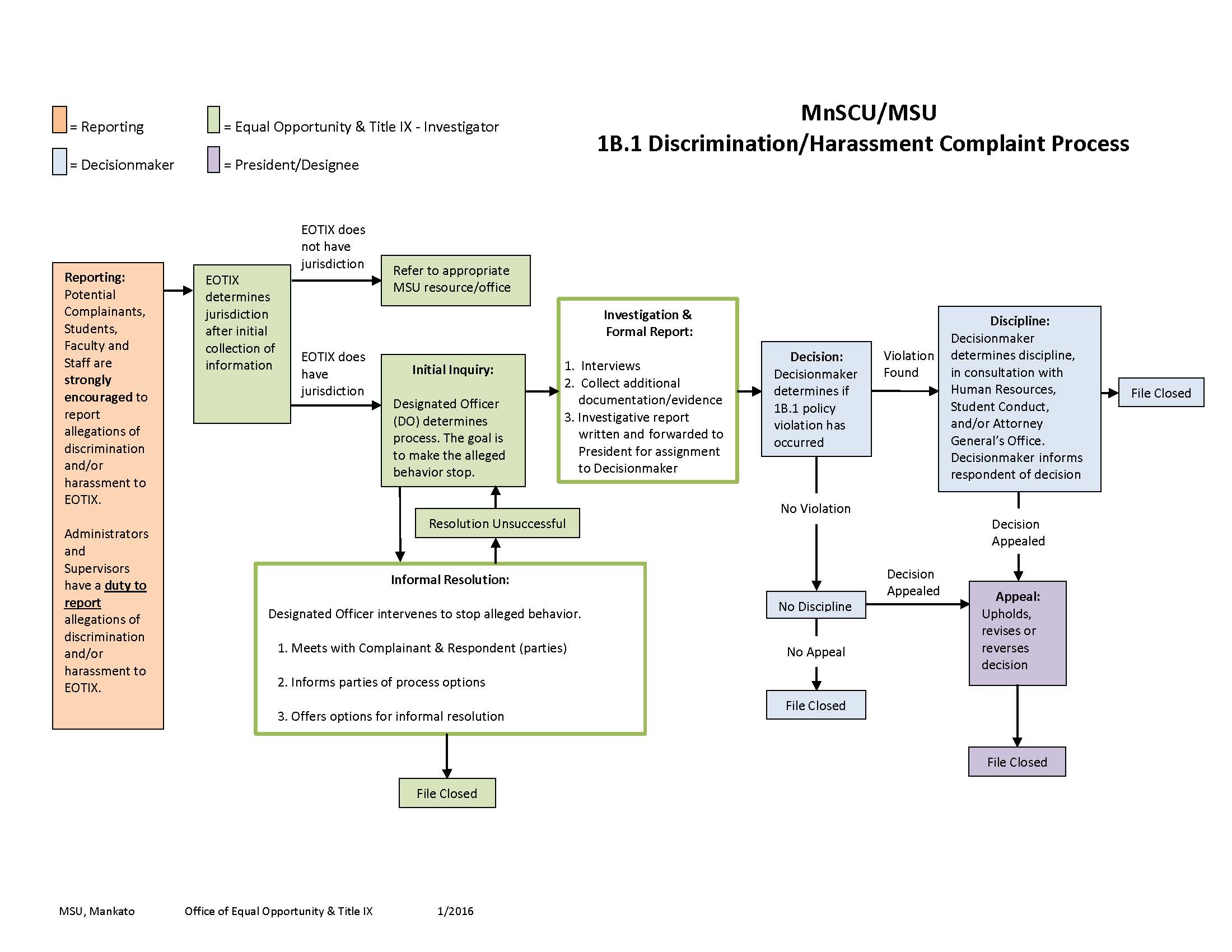1B.1.1 Nondiscrimination and/or Discriminatory Harassment Complaint Process
 An overview of this investigation process begins with reporting. Potential complainants, such as students, faculty, and staff, are strongly encouraged to report allegations of discrimination and/or discriminatory harassment to the Office of Equal Opportunity & Title IX. Some administrators and supervisors have a duty to report allegations of discrimination and/or discriminatory harassment.
An overview of this investigation process begins with reporting. Potential complainants, such as students, faculty, and staff, are strongly encouraged to report allegations of discrimination and/or discriminatory harassment to the Office of Equal Opportunity & Title IX. Some administrators and supervisors have a duty to report allegations of discrimination and/or discriminatory harassment.
- Reporting: Potential complainants, students, faculty, and staff are strongly encouraged to report allegations of discrimination and/or harassment to EOTIX. Administrators and supervisors have a duty to report allegations of discrimination and/or harassment to EOTIX.
- EOTIX determines jurisdiction after initial collection of information.
- If EOTIX does not have jurisdiction, the matter is referred to the appropriate resource or office.
- If EOTIX does have jurisdiction, EOTIX conducts an initial inquiry.
- Initial Inquiry: Designated officer (EOTIX) determines the process. The goal is to have the alleged behavior stop.
- Designated officer can determine to proceed with an informal resolution or formal investigation and formal report.
- Informal Resolution: Designated officer intervenes to stop the alleged behavior. During this process, the designated officer will meet with the
- Complainant and Respondent (parties) separately, informs parties of process options, and offers options for informal resolutions.
- If the informal resolution is successful, the file is closed.
- If the informal resolution is unsuccessful, the matter returns to the initial inquiry for the designated officer to determine how to proceed.
- After initial inquiry, the designated can determine to proceed with a formal investigation.
- Formal Investigation and Formal Report: Designated officer conducts interviews, collect additional evidence/documentation, and draft investigative report written and forwarded to the President for assignment to a decisionmaker.
- Decision: Decisionmaker determines if a 1B.1 Policy violation occurred.
- If there is no violation, there is no discipline.
- If there is a violation, decisionmaker also decides discipline.
- Discipline: Decisionmaker determines discipline, in consultation with Human Resources, student conduct, and/or Attorney General’s office. Decisionmaker informs Respondent of the decision.
- Regardless of whether the Decisionmaker finds a violation or no violation, the parties all have the opportunity to appeal the decision.
- If there is no appeal the file is closed.
- Appeal: A new Decisionmaker will uphold, reverse, or revise decision.
- After the appeal is complete the file is closed.

